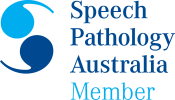ENT Clinic Sydney - Suite 70B, Royal Randwick Shopping Centre, 73 Belmore Road, Randwick, Sydney, Australia











By admin
By admin
This gentleman requested several changes to his nose. The before and after pictures are displayed in the slideshow.
To address his concerns this gentleman underwent open structure rhinoplasty, nasal septal reconstruction and bilateral inferior turbinoplasties.
The concerns in terms of appearance and function are addressed. After rhinoplasty the bump is removed. The tip is deprojected and uprotated. The columella retraction was addressed. Overall the nose has a natural appearance in keeping with the facial features. The nasal airway is improved and breathing is easier.
The post Grant Before and After Pics appeared first on Rhinoplasty Clinic Sydney.
Preparing in advance for a smooth recovery will help you to recover after tonsillectomy surgery. A tonsillectomy is one of the more painful surgeries with a recovery process that can take a week or two. So its better to manage your recovery proactively, rather than try to downplay the pain of recovery associated with this surgery.
When tonsils become infected or inflamed, they must be removed; however, many patients find the pain of recovery to be uncomfortable. There are some helpful tips, however, that can help ease pain and speed recovery time. If you’ve just gone through a tonsillectomy, here are five tips for a smooth recovery.
First, it’s very important to enlist the help of a friend or family member during your recovery period. The combination of intense pain and numbing pain medications will likely render you incapacitated for the first few days after surgery. An acting nurse can help keep your ice cup full, keep you comfortable and ensure that you have what you need to recover.
Ice is one of the best things to have during a tonsillectomy recovery. Ice keeps the incision site moist during recovery and this is very important for speedy healing. The cold temperature of ice also helps to numb pain and reduce swelling. Because a swelling uvula can be a dangerous side effect of a tonsillectomy, chewing ice is an absolute necessity. Keep a cup filled with ice chips on hand at all times.
Eating ice cream is one of the most reliable ways to help you during a tonsillectomy recovery. While many people feel absolutely incapable of eating food after surgery, keeping energy levels high is an important part of the recovery period. Choose foods that are soft and creamy such as yogurt and ice cream, or consume nutrient-rich broths and sugary beverages for energy.
The biggest mistake that one can make during a tonsillectomy recovery is to skip a dose of pain medication. To prevent this from happening, it’s a good idea to create a pain medication schedule. This will help you keep on top of your medication and prevent pain from spiralling out of control.
The tonsillectomy recovery process is lengthy and frustrating, so be sure to have some entertainment laid by for the recovery period. Video games, movies, great books, soothing music and puzzles are great ways to keep your mind off the pain.
Tonsillectomies can pose a difficult recovery for patients, but the pain will pass faster with the right management. These helpful tips can get you through the worst of the recovery period.
If you have questions about snoring, tonsillitis or tonsillectomy, contact your local doctor who will arrange for you to see an ear nose and throat surgeon.
The post 5 Helpful Tips for Tonsillectomy Recovery appeared first on ENT Clinic Sydney.
Peppered throughout the human body are small organs known as glands. These organs have a complex and important job without which we couldn’t survive. They produce hormones that keep the body functioning properly.
Among the most critical are the endocrine glands. These include the pituitary gland, which secretes hormones regulating growth, pain relief and sex function, among others, and the adrenal glands, which produce stress hormones. Another key member of this group is the thyroid gland, which regulates the body’s use of energy, creation of proteins and sensitivity to other hormones.
The parathyroid glands are attached to the thyroid, but despite the similar names, they play a different role. The parathyroids are usually located on the back surface of the thyroid, in the portion of the neck between the Adam’s apple and the collarbone. There are typically four of them.
These small glands release a substance known as parathyroid hormone, or PTH. Its primary purpose is to regulate the body’s blood calcium levels, a task it shares with the thyroid. It also has an effect on the body’s absorption of phosphate. See the picture below for thyroid and parathyroid gland anatomy.
The thyroid gland produces a hormone called calcitonin that limits the level of calcium in the blood. PTH works as an antagonist to this hormone and together they keep calcium levels within a very narrow range. PTH also increases phosphate absorption by activating vitamin D in the kidney.
The parathyroid glands, like the thyroid, come with their own set of disorders. Overproduction of hormones by the thyroid can lead to the well-known conditions hypothyroidism and hyperthyroidism. Less well-known are the conditions hypoparathyroidism and hyperparathyroidism.
Hypoparathyroidism occurs when the parathyroids produce too little PTH. This results in low blood calcium levels, which in turn results in symptoms including cramping, involuntary muscle spasms and unpleasant tingling. Headaches, insomnia, abdominal pain, fatigue and bone pain are also possible.
Hypoparathyroidism is a serious condition and it can cause medical emergencies, including seizures, irregular heartbeats and respiratory failure. There are a number of possible causes, such as removal of the parathyroid glands during surgery, autoimmune disorders, hemochromatosis and magnesium deficiency, among others. It can also be inherited.
Hyperparathyroidism, meanwhile, results from an overproduction of PTH. Primary hyperparathyroidism occurs when the glands actually malfunction. This can be caused by hyperplasia (increased cell production), adenoma (a benign tumour) or, in extremely rare cases, carcinoma (cancer) of the parathyroids. Patients with bipolar disorder who take lithium long-term are also at greater risk for primary hyperparathyroidism, since that drug can lower calcium levels, leading to stimulated production of PTH.
Secondary hyperparathyroidism is caused by any medical condition that leads to lowered calcium levels in the blood. Chronic kidney failure and vitamin D deficiency are the most common factors leading to this disorder.
About half of all patients with hyperparathyroidism are identified by medical tests before they show any signs. Low calcium rarely causes overt distress though depression, bone pain, osteoporosis, nausea, decreased appetite and kidney stones are among the possible symptoms. Bone loss is possible.
If you have questions or concerns about thyroid problems see your local doctor who will arrange for you to see a thyroid surgeon.
For more information about the parathyroid glands click here.
The post What Are the Parathyroid Glands? appeared first on Thyroid Clinic Sydney.
Call (02) 8188 2570
or our local call number 1300 123 368
Belinda is passionate about nutrition and believes everything in moderation is the key to success, and has broad range of up to date knowledge about practical, client specific care and dietary counselling.
Ashleigh has experience and expertise with individual and group speech therapy from a spectrum of clinical environments including hospitals, schools and private practice.
ENT Clinic Sydney - Suite 70B, Royal Randwick Shopping Centre, 73 Belmore Road, Randwick, Sydney, Australia










